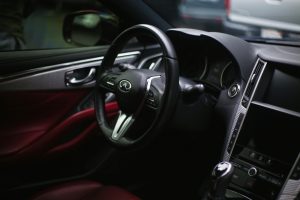360-Degree Cameras vs. Classic Parking Sensors
Parking can be a daunting task, especially in crowded areas. Trying to squeeze into a tight spot or maneuvering into a parallel space can be a hassle for even the most experienced drivers. To aid in this challenging task, car manufacturers have introduced various parking assist technologies. Among these are the classic parking sensors and the newer 360-degree cameras. While both serve the purpose of making parking easier, they have distinctive features and benefits that set them apart. In this article, we will explore the differences between 360-degree cameras and classic parking sensors and determine which one is more effective in assisting drivers when it comes to parking.
The Basics of Parking Sensors and 360-Degree Cameras
Classic Parking Sensors
Classic parking sensors, also known as ultrasonic sensors, have been around for almost 50 years. These sensors use ultrasonic waves to detect obstacles in the car’s surroundings. They typically come in sets of two to four sensors, placed on the bumper of the vehicle. These sensors emit a sound wave that bounces off of objects and sends a signal back to the car’s computer system. The closer an object is to the car, the quicker the signal is received, indicating to the driver the proximity of the obstacle.
360-Degree Cameras
On the other hand, 360-degree cameras are relatively new to the parking assist game. These cameras use multiple lenses to provide a 360-degree view of the vehicle’s surroundings. The images captured by the cameras are then displayed on the car’s dashboard screen, giving the driver a virtual bird’s eye view of the vehicle. Some 360-degree cameras also come with an automatic parking feature, where the car can park itself with minimal driver input.
Pros and Cons of Classic Parking Sensors
Pros
– Classic parking sensors are relatively affordable and can be added as an aftermarket accessory.
– They can be easily installed on most vehicles, regardless of make and model.
– They are quick and efficient in detecting obstacles and alerting the driver.
– Classic sensors can be used in any weather condition, including rain and snow.
Cons
– They have a limited range of detection, usually around 1.5 meters.
– The sensors can be easily damaged or blocked by dirt, snow, or ice, rendering them useless.
– The sound alerts can be annoying and distracting for some drivers.
– They only provide a view of obstacles behind the vehicle, not on the sides.
Pros and Cons of 360-Degree Cameras
Pros
– 360-degree cameras give a full view of the vehicle’s surroundings, eliminating blind spots.
– They provide a more accurate and detailed view than traditional parking sensors.
– Some 360-degree cameras come with additional features such as automatic parking, making parking even easier.
– The cameras are usually sleek and discreet, not affecting the car’s appearance.
Cons
– 360-degree cameras can be quite pricey, especially as a factory-installed option.
– They need to be professionally installed, and the process may require additional wiring, depending on the vehicle.
– The cameras can malfunction in extreme weather conditions, such as heavy rain or snow.
– They may require frequent cleaning to maintain clear visibility.
Which One is Better?
Both classic parking sensors and 360-degree cameras have their advantages and disadvantages. It ultimately comes down to the driver’s personal preference and budget. Classic sensors are more affordable and provide a quicker alert, making them a suitable option for those on a budget. However, if you want a more accurate and comprehensive view of your surroundings, 360-degree cameras would be the better option.
It is worth mentioning that some newer cars come equipped with both classic parking sensors and 360-degree cameras. In such cases, drivers get the best of both worlds, with the quick alerts of parking sensors and the detailed view of the cameras. Nevertheless, with the constant advancements in technology, we can expect both these technologies to improve and become more efficient in the coming years.
The Final Verdict
Parking is undoubtedly a stressful task, but with the help of technology, it can become a lot easier. Classic parking sensors and 360-degree cameras both serve their purpose of assisting drivers in parking. However, with their more accurate view and additional features, 360-degree cameras seem to be the more promising option in today’s market. So, if you are looking to upgrade your parking assist game, investing in a 360-degree camera might just be the best decision you make.










